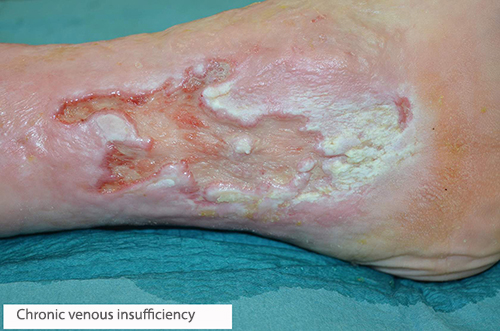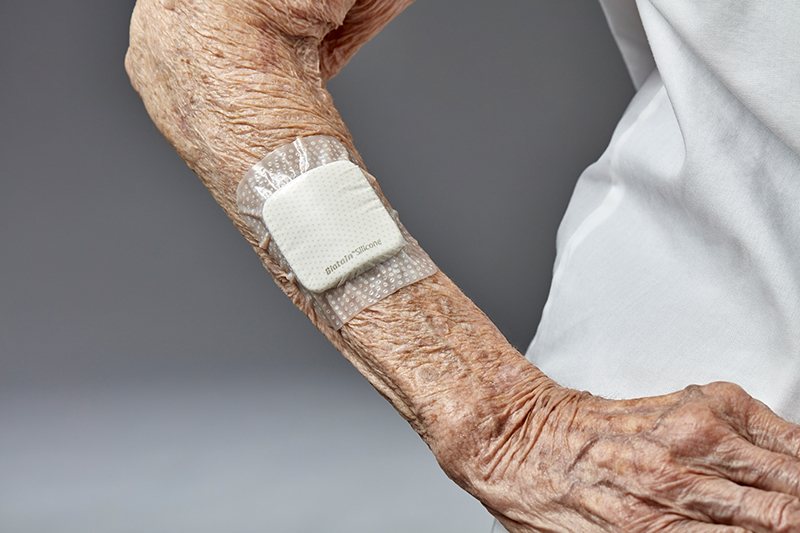Get full access with a free account
Benefits of the Coloplast® Professional Educational platform
- Get full access to all educational content, events and resources
- Track your progress
- Share content with your collegues
- Share supporting material with your patient
Leg ulcers: what are they and how do you treat them?
In this section, you’ll learn:
A huge burden – for patients and society
Living with a leg ulcer that won’t heal has significant consequences for a person’s quality of life. As many of you will know from your daily practice, leg ulcers are often painful; they might smell; and they typically reduce a person’s mobility. As a result, this group of patients is under a lot of psychological stress. They are often too embarrassed to go out and suffer from loneliness and anxiety.1, 2
Chronic wounds are a heavy burden on the healthcare system, too. It is estimated that Western countries spend 1% of their healthcare budgets on managing leg ulcers.3
As a healthcare professional, you can help reduce this burden. This section gives you a basic understanding of the different types of chronic leg ulcers and specific guidance on how to manage them.
What are the different types of leg ulcers and why do they form?
There are three main types of chronic leg ulcers:
- Venous leg ulcers
- Arterial leg ulcers
- Diabetic foot ulcers
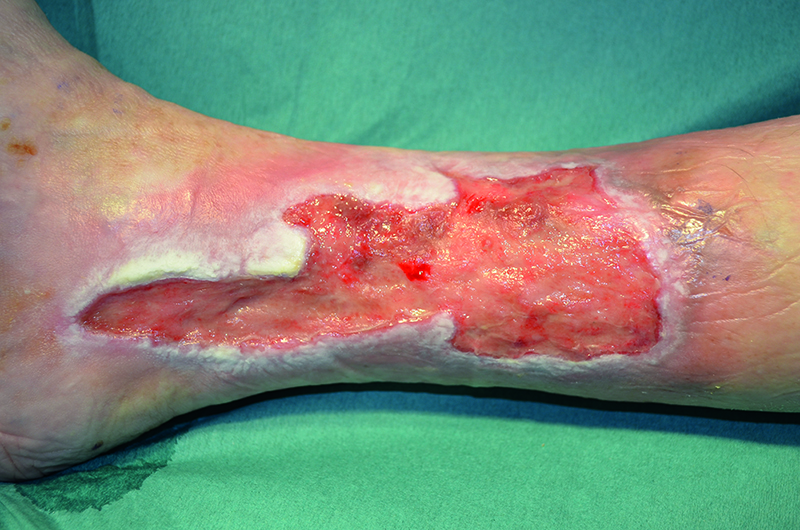
Venous Leg Ulcer
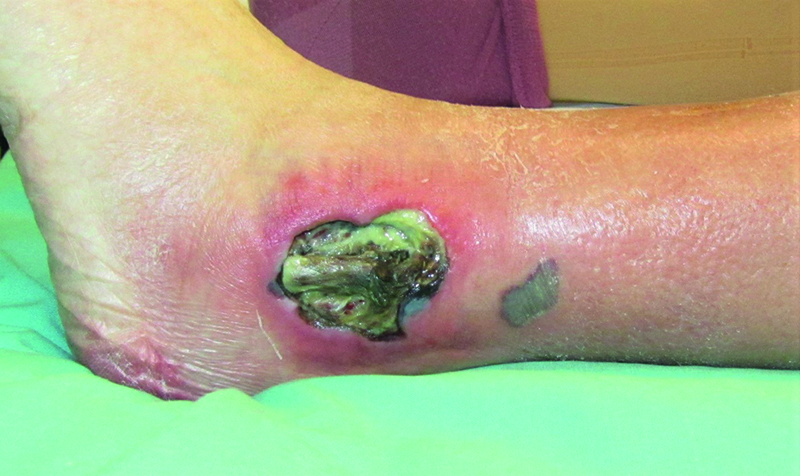
Arterial Leg Ulcer
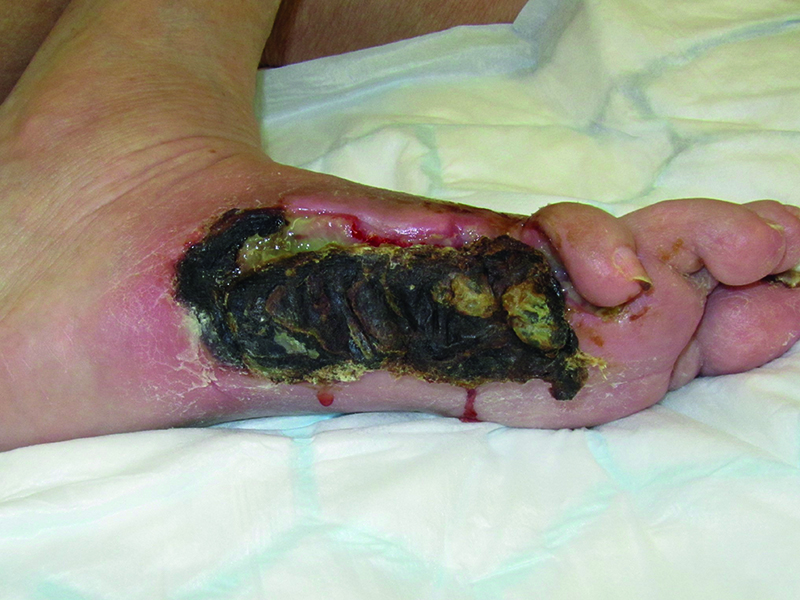
Diabetic Foot Ulcer with necrosis
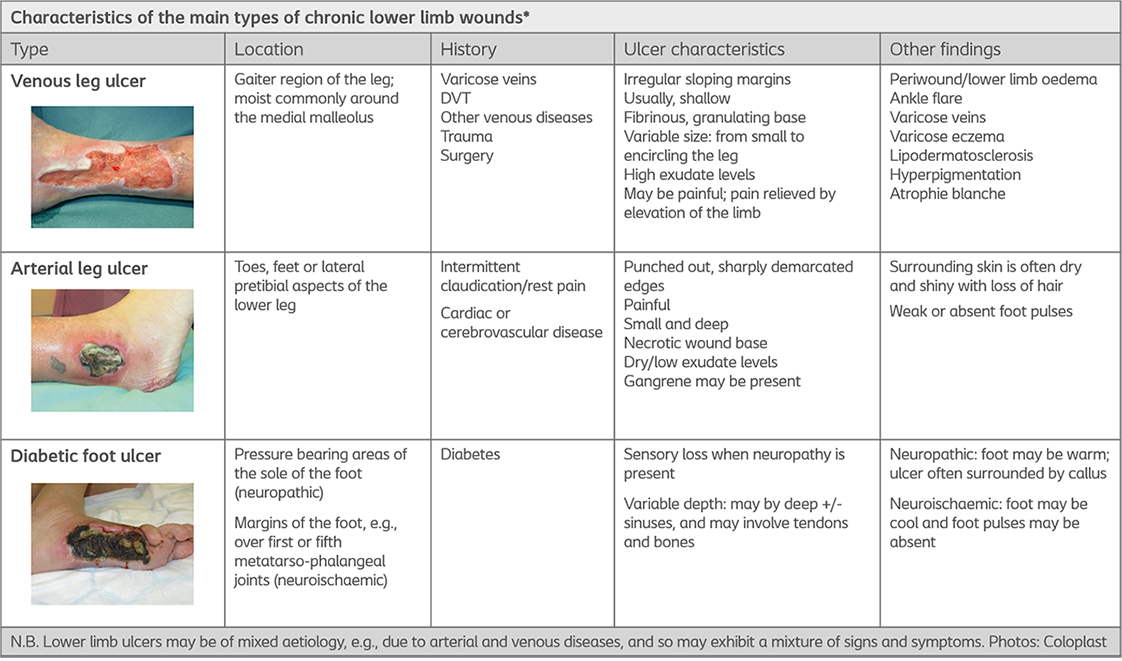
Lower limb, or leg, ulcers typically form because of insufficient blood flow in either of the arteries (known as arterial insufficiency) or the veins (known as venous insufficiency). They can also form because of a combination of factors (mixed aetiology), such as both arterial and venous insufficiency, or as a result of other chronic health conditions, such as diabetes.4
To find out more about how arterial and venous insufficiency can cause leg ulcers, click here.
The chart below describes the main characteristics for each type of leg ulcer.
How to identify and manage a leg ulcer
Manyfactors can lead to leg ulcers. That’s why you need to take a multidisciplinary approach, e.g. coordinating with specialist nurses, podiatrists, nutritionists, etc., when assessing your patient. This will help you to determine how the disease has developed; make a definitive diagnosis; and develop an optimal treatment plan for your patient.4
Once the treatment plan is in place, it’s important to monitor patient progress and adhere to the plan as the ulcer decreases in size. Training and education are also vital for everyone involved in caring for patients with chronic leg ulcers.4
There are five key principles to follow when managing leg ulcers:3
- find out what’s causing the wound (i.e. its aetiology);
- assess the patient holistically;
- decide if you need to get a referral because of comorbidities;
- evaluate whether compression therapy is a suitable option for the patient; and
- gather relevant information for appropriate wound management.
If you’re looking for more specific details on how to manage venous leg ulcers, please click here.
References
- Nelson, A. and Adderley, U. (2016). Venous Leg Ulcers. Clinical Evidence 01, 1902
- Platsidaki, E., Kouris, A., Christodoulou, C. (2017). Psychosocial Aspects in Patients With Chronic Leg Ulcers. Wounds 29(10):306–310.
- Harding K, et al. Simplifying venous leg ulcer management. Consensus recommendations. Wounds International 2015
- Agale, S. V. (2013). Chronic Leg Ulcers: Epidemiology, Aetiopathogenesis, and Management. Hindawi Publishing Corporation. 1-10
You may also be interested in…
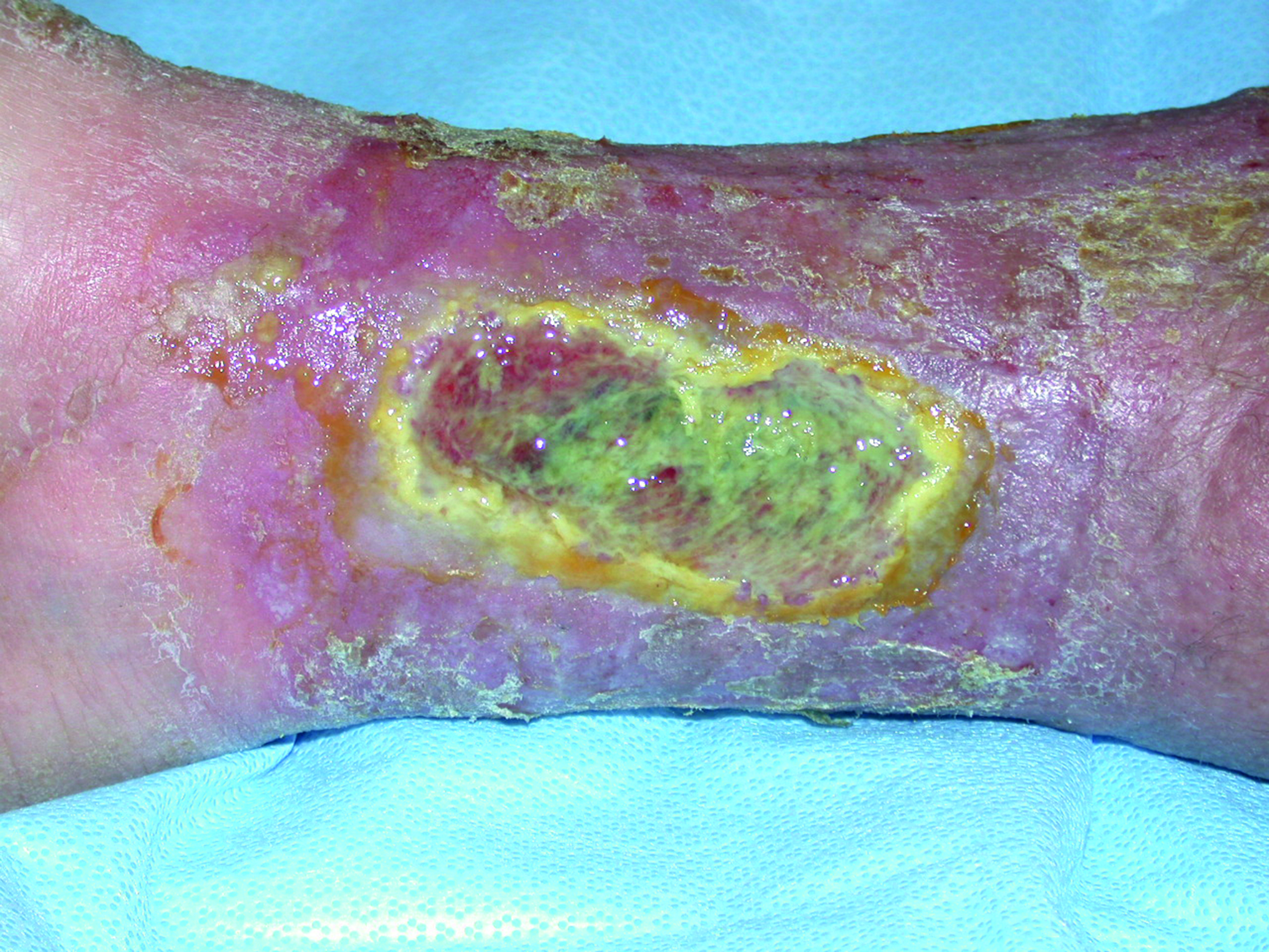
HEAL e-learning
Learn about leg ulcers and how to manage them with this EWMA-endorsed course.
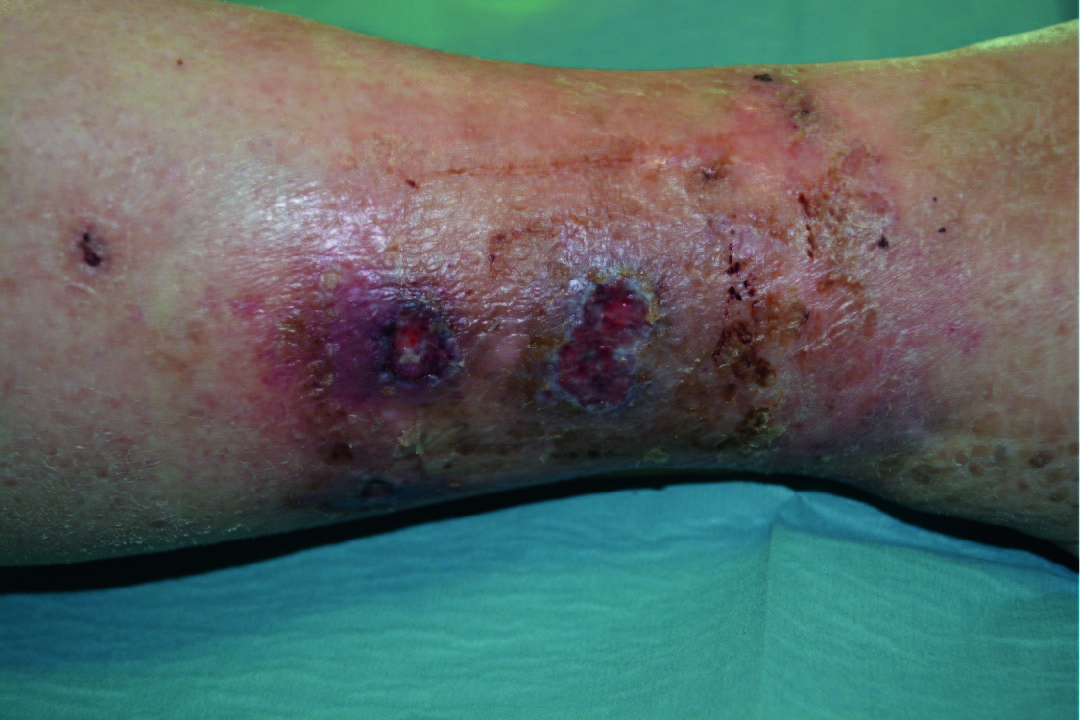
Patient case
Learn how a colonized arterial wound was managed with a silicone foam dressing.
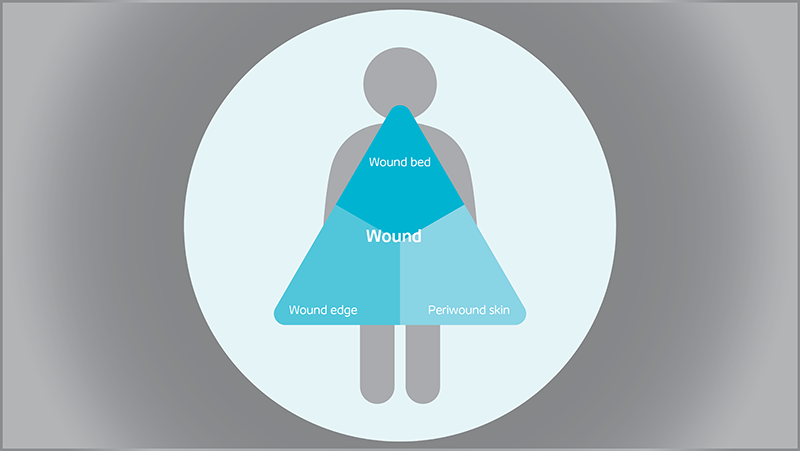
Triangle of Wound Assessment
Conduct a holistic and systematic wound assessment with our tool.

